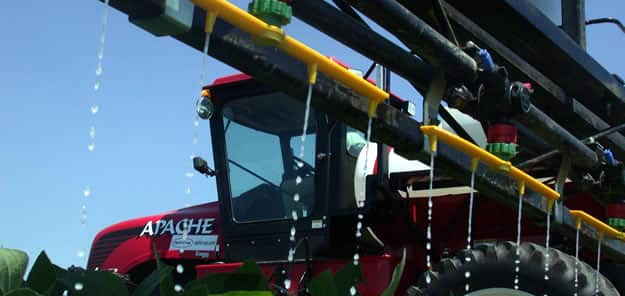Fertilizing Crops After Planting
Dry or Liquid Fertilizer? Plants can't tell the difference.
After planting, there are several options to fertilize your crops. The truth is, plants don’t care. The important thing is ensuring they have the nutrients necessary to produce an optimal yield. Both liquid and dry nitrogen can be applied safely. Each has unique advantages depending on the circumstances, such as weather, crop residue, and the crop being planted. If you are broadcast applying them to an emerged crop, be sure to apply dry materials to a dry crop canopy and liquid fertilizer to wet crop leaves. Take care not to over-apply liquid nitrogen and cause damage to crop foliage. Hot air temperatures and low humidity conditions increase the risk of crop injury. Consult your agronomist for the best recommendations in this regard.
Tips for dry fertilizer application
 If you have confidence in the local weather forecast for rain, Urea (a dry fertilizer) is a good option. Urea can be surface-applied ahead of rainfall. Rain moves the applied nitrogen into the soil.
If you have confidence in the local weather forecast for rain, Urea (a dry fertilizer) is a good option. Urea can be surface-applied ahead of rainfall. Rain moves the applied nitrogen into the soil.
Applying dry fertilizer can be a risk/reward scenario, however. One contributing factor is crop residue. If there is little crop residue on the field, to adequately incorporate the nitrogen, at least ¼ inch of rain is required. With heavy crop residue, like corn stalks, ½ inch of rainfall is necessary. If Urea remains on the soil surface for several days or more than a week before adequate rainfall, a serious loss of nitrogen can occur.
Tips for sidedress fertilizer application
For row crops, fertilization using starter fertilizer can meet the crop’s phosphorus and micronutrient needs and provide some nitrogen. Starter fertilizers are applied near the roots and provide essential nutrients for seedlings until their root system develops, especially when crops are planted in cold, wet soils such as in early spring. In this region, Starter is most commonly a liquid product. Be careful not to over-fertilize with nitrogen in the seed furrow to avoid reducing seed germination and emergence. Planters with 2 x 2 fertilizer attachments can safely apply higher amounts of nitrogen because there is no direct contact of the fertilizer with row crop seed. The 2 x 2 applications are two inches to the side of the seed and two inches below the soil surface.
Stream bars also work well to apply liquid nitrogen to meet the complete crop needs. Ideally, streaming is right between the crop rows. Farmers with anhydrous ammonia applicators could also apply needed nitrogen. The ammonia or injected 28-0-0 must be applied between the rows to avoid crop injury. Soil conditions must enable anhydrous injector slots to properly close to eliminate ammonia nitrogen losses. For injection of 28-0-0 or anhydrous ammonia, ideal soil conditions are somewhat dry in the surface around three to four inches, so soil flows into the injection slot, sealing it completely.
The pros and cons of dry and liquid applications
| Dry | Liquid sidedress |
|---|---|
|
|





